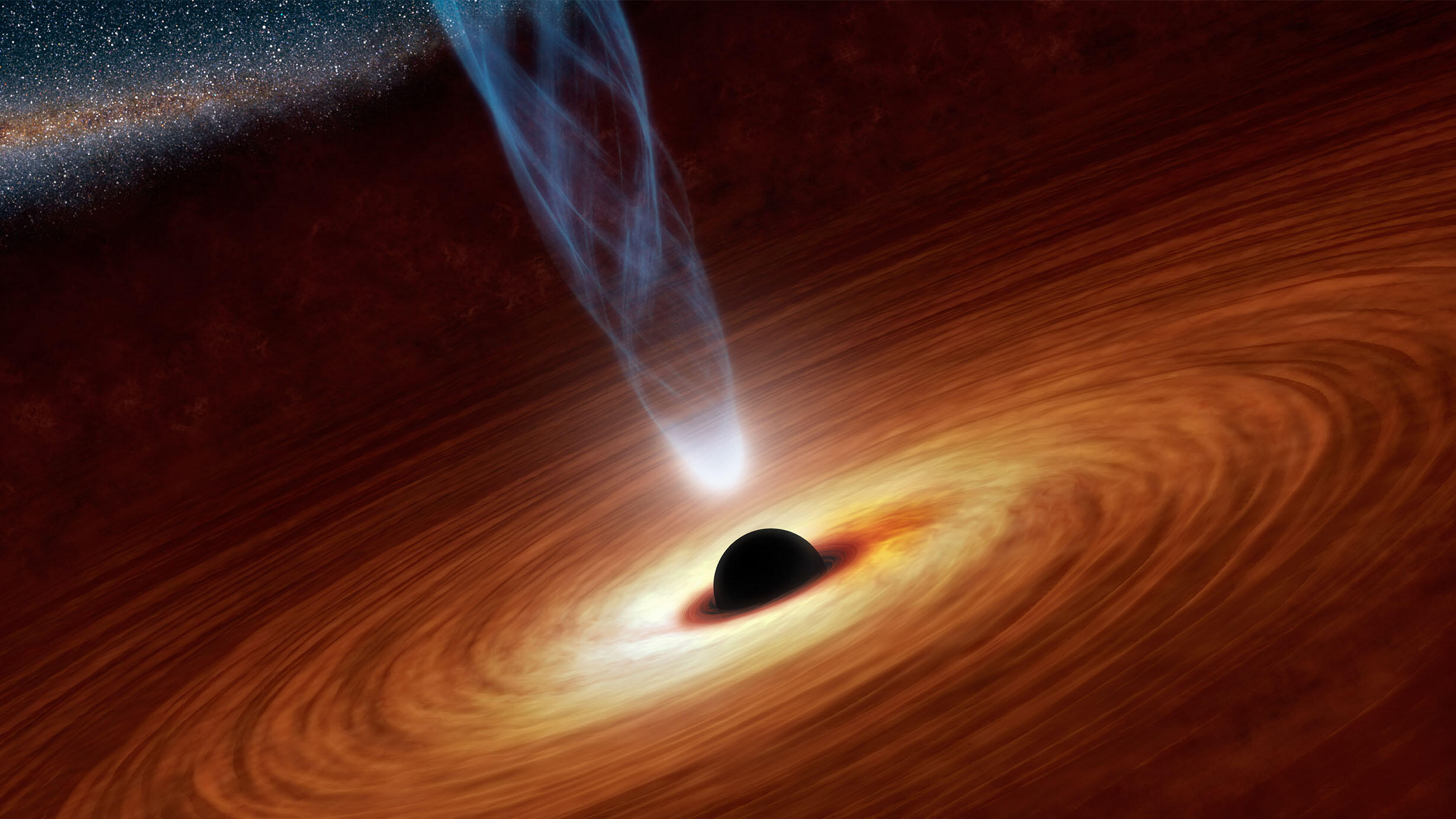 In this artist’s conception of a supermassive black hole at the heart of a galaxy, dust and gas form a swirling disk as they fall onto the hole, attracted by its gravity. A new study suggests researchers may be able to see light from the effect black hole mergers have on the gas in the disk.
In this artist’s conception of a supermassive black hole at the heart of a galaxy, dust and gas form a swirling disk as they fall onto the hole, attracted by its gravity. A new study suggests researchers may be able to see light from the effect black hole mergers have on the gas in the disk.Until recently, researchers tracking the merger of black holes have been operating quite literally in the dark. That’s because, although gravitational wave detectors tell us black holes merge in the universe at least once a week, associated light that might help determine where they are happening was imperceptible.
But now, a new study in The Astrophysical Letters Journal led by scientists at the American Museum of Natural History and the City University of New York (CUNY) suggests that researchers might finally be able to see light from black hole mergers if the collisions happen in the presence of gas.
Formed when massive stars die, black holes tend to sink into regions of galaxies where gravity is strongest, especially, it’s thought, into much larger, single, supermassive black holes at the centers of galaxies. The new work suggests that if a bright gas disk—formed when gas falls onto a central supermassive black hole—envelops smaller orbiting black holes, it may be possible to see the effect of their mergers on the gas disk through the glow created by the shock collisions of nearby gas. The phenomenon is detectable with telescope sky surveys if the gas disk is thin enough to let light escape. What's more, the time it takes for the glow to be released may help astronomers distinguish black hole mergers from random variations in the disk gas.
“With a light signature,” said paper author Barry McKernan, a research associate in the Museum’s Department of Astrophysics, “astronomers could easily pinpoint the cosmic location of these mergers and study them in much more detail than is presently possible.”